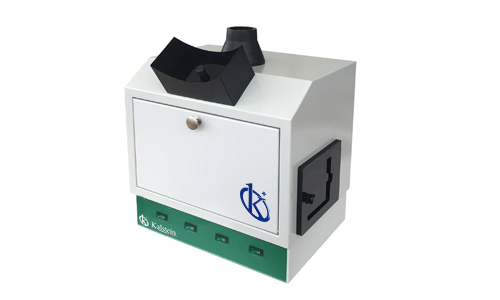Molecular biology is constantly evolving, and along with it, the technological tools that allow scientists to advance in this area of study. One of them is the gel transilluminator, a crucial machine in laboratories around the world.
The transilluminator is one of the most valuable devices in a molecular biology laboratory. This often underestimated device plays a crucial role in the visualization and documentation of agarose and polyacrylamide gels. But what exactly is a transilluminator and how does it work?
The Mechanics of the Transilluminator
The transilluminator for gels basically works by emitting ultraviolet (UV) or blue light. DNA or protein samples, which are normally invisible to the naked eye, are stained with a fluorescent dye that absorbs the light emitted by the transilluminator. When light passes through the samples, it causes the fluorescent dyes to emit light at a different wavelength, which makes the DNA or protein bands visible.
UV light has been commonly used because of its effectiveness. However, it has its disadvantage: it can damage DNA samples. On the other hand, blue light is considered a safer alternative that not only protects the samples, but is also less harmful to human eyes.
Essential Components and Operation of the Transilluminator
A transilluminator essentially consists of a light source and a filter. The light source is the one that emits the ultraviolet or blue light. The filter, on the other hand, is designed to allow only a specific wavelength of light to pass through it. This system allows effective illumination of the samples without considerable interference from other wavelengths.
When the gel is placed on the transilluminator, the light emitted by the light source passes through the filter and the gel. If the gel has been treated with a fluorescent dye, it absorbs the light and then emits it at a different wavelength. This emitted light is what we see as the bright bands of DNA or proteins in the gel.
What we have at Kalstein for you
In short, the transilluminator plays a central role in molecular biology laboratories by enabling the visualization of samples that would otherwise be invisible. Its operation is based on the use of ultraviolet or blue light and fluorescent dyes to illuminate DNA or protein bands in gels. Although its function may seem simple, the transilluminator is a basic building block in the achievements and advances of molecular biology.
As a manufacturer of laboratory equipment, Kalstein is pleased to offer high-end products, with updated design and advanced technology; know our transilluminators HERE, you will find the YR models that are available for purchase, we also have a new 3D platform that has unlimited versatilities, present in over thirty countries worldwide, publish with us without language restrictions, with shipping plans, be seen, you are more.

